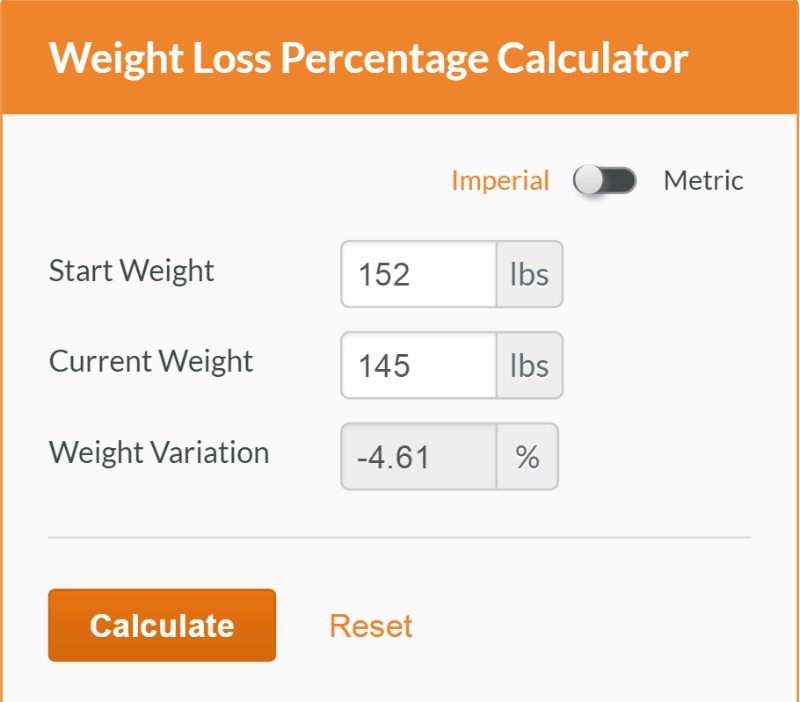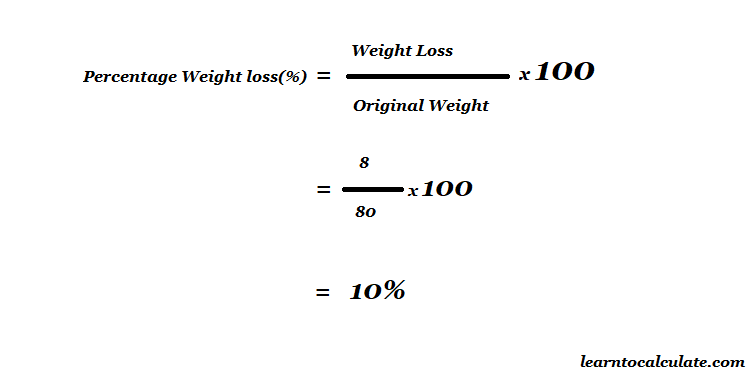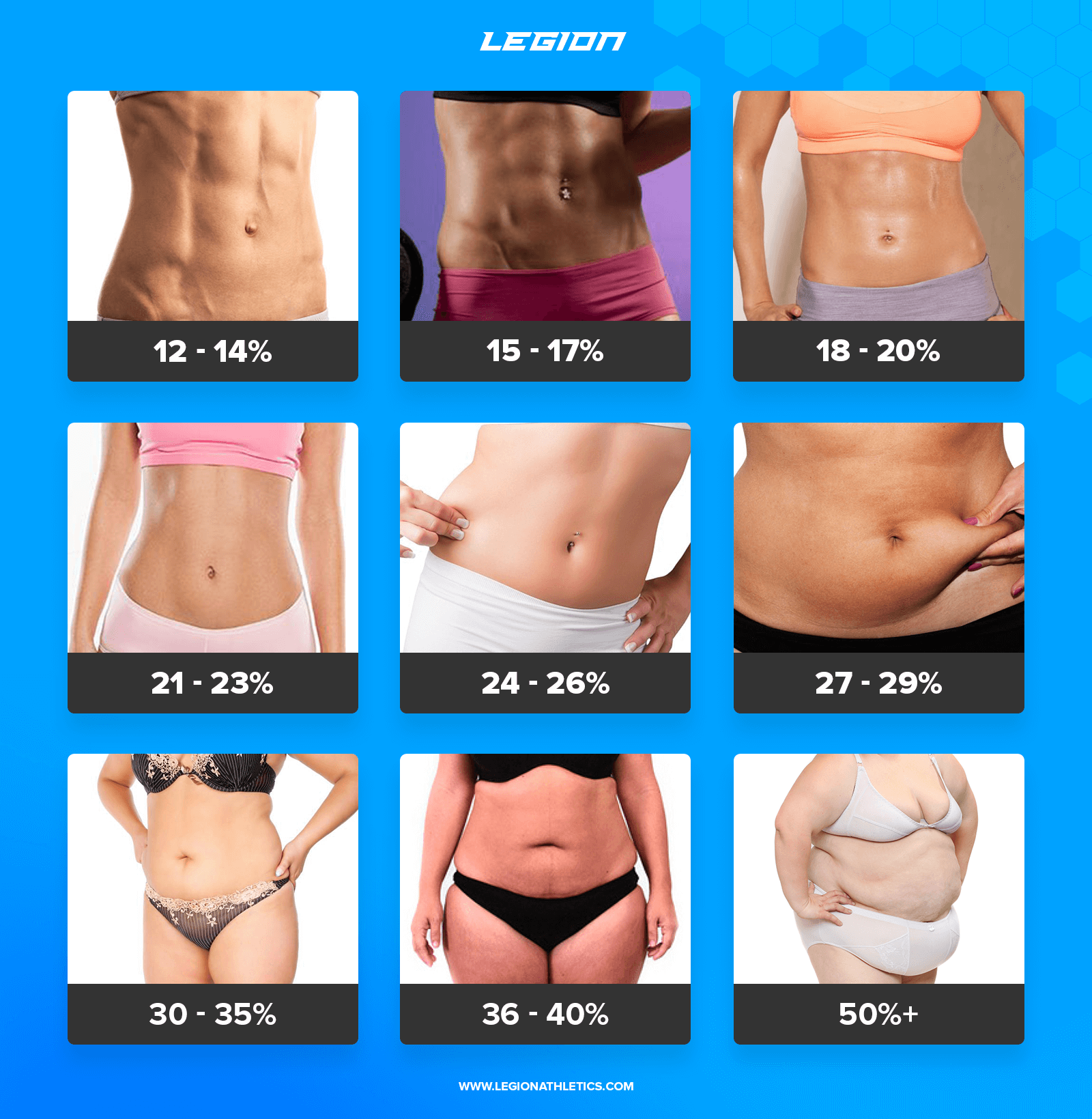A lot you to how to calculate percentage weight loss they on show. So, I've created handy weight loss calculator you check percentage weight loss. Weight Loss Percentage Formula. formula calculate weight loss percentage is: lbs lost divided starting weight.
 How Calculator Works. calculate weight loss percentage, current weight subtracted the weight were when first began efforts lose weight. figure then divided your starting weight the resulting number multiplied 100. will give your weight loss percentage.
How Calculator Works. calculate weight loss percentage, current weight subtracted the weight were when first began efforts lose weight. figure then divided your starting weight the resulting number multiplied 100. will give your weight loss percentage.
 This free body fat calculator estimates body fat percentage based the U.S. Navy Method the BMI method. gives loss needed reach ideal body fat. . Body Fat to Lose Reach Ideal: 7.2 lbs: Body Fat (BMI method) . Body fat percentage (BFP) formula adult females: BFP = 1.20 × BMI + 0.23 × Age - 5.4 .
This free body fat calculator estimates body fat percentage based the U.S. Navy Method the BMI method. gives loss needed reach ideal body fat. . Body Fat to Lose Reach Ideal: 7.2 lbs: Body Fat (BMI method) . Body fat percentage (BFP) formula adult females: BFP = 1.20 × BMI + 0.23 × Age - 5.4 .
 Should opt to fill this information, calculator automatically estimate body fat percentage, assuming average values someone your height, age, weight leads sedentary lifestyle. Understanding Weight Fat Loss. Weight loss often synonymous fat loss, this a misnomer.
Should opt to fill this information, calculator automatically estimate body fat percentage, assuming average values someone your height, age, weight leads sedentary lifestyle. Understanding Weight Fat Loss. Weight loss often synonymous fat loss, this a misnomer.
 You calculate weight loss a percentage the formula above. Start finding amount weight lost. 200 lbs - 180 lbs = 20 lbs lost. Then, divide weight loss the initial weight. 20 lbs / 200 lbs × 100% = 10%.
You calculate weight loss a percentage the formula above. Start finding amount weight lost. 200 lbs - 180 lbs = 20 lbs lost. Then, divide weight loss the initial weight. 20 lbs / 200 lbs × 100% = 10%.
 According Veltkamp Dr. Ali, ideal body fat percentage men ranges about 8 24 percent, the ideal body fat percentage women 20 35 percent. isn't set standard healthy body fat all individuals, many factors play this number.
According Veltkamp Dr. Ali, ideal body fat percentage men ranges about 8 24 percent, the ideal body fat percentage women 20 35 percent. isn't set standard healthy body fat all individuals, many factors play this number.
 Body Fat Percentage Calculator Lean Body Mass Calculator. Ads. How this weight loss percentage calculator work? is quick weight tool can you determine how of weight managed loose terms percentage. can it any the measurement systems available, English metric you make .
Body Fat Percentage Calculator Lean Body Mass Calculator. Ads. How this weight loss percentage calculator work? is quick weight tool can you determine how of weight managed loose terms percentage. can it any the measurement systems available, English metric you make .
 The Weight Loss Percentage Calculator measures change your weight a percentage than a raw number. allows to compare weight loss to others' a to comparison. Weight Loss Percentage Calculator you option compare weight loss multiple users of starting weight.
The Weight Loss Percentage Calculator measures change your weight a percentage than a raw number. allows to compare weight loss to others' a to comparison. Weight Loss Percentage Calculator you option compare weight loss multiple users of starting weight.
 To calculate weight loss percentage, divide amount weight lost your starting weight, multiply by 100. break down, formula be: number pounds lost/your starting .
To calculate weight loss percentage, divide amount weight lost your starting weight, multiply by 100. break down, formula be: number pounds lost/your starting .
 This forms baseline calculating percentage weight loss. Current Weight Assessment Regularly measure current weight track progress. real-time data fundamental calculating weight loss percentage effectively. Formula Unveiled calculate weight loss percentage, the formula:
This forms baseline calculating percentage weight loss. Current Weight Assessment Regularly measure current weight track progress. real-time data fundamental calculating weight loss percentage effectively. Formula Unveiled calculate weight loss percentage, the formula:
 How To Calculate Percentage Weight Loss
How To Calculate Percentage Weight Loss
 How to Calculate Your Body Fat Percentage Easily & Accurately
How to Calculate Your Body Fat Percentage Easily & Accurately
 A Simple and Accurate Weight Loss Calculator (and How to Use It
A Simple and Accurate Weight Loss Calculator (and How to Use It
 How To Calculate Weight Loss Percentage? Methods and Tips
How To Calculate Weight Loss Percentage? Methods and Tips
 How To Calculate Weight Loss Percentage - YouTube
How To Calculate Weight Loss Percentage - YouTube
 How to Calculate Weight Loss Percentage in Excel (5 Methods)
How to Calculate Weight Loss Percentage in Excel (5 Methods)
 How to calculate weight loss percentage in excel #calculate #weight
How to calculate weight loss percentage in excel #calculate #weight
 How To Calculate Percentage Of Weight Loss
How To Calculate Percentage Of Weight Loss
 How To Calculate Percentage Of Weight Loss In Excel - Calculator
How To Calculate Percentage Of Weight Loss In Excel - Calculator
 Calculate Body Fat Loss Percentage Weight You Better Watch Here Now
Calculate Body Fat Loss Percentage Weight You Better Watch Here Now
 How To Calculate Weight Loss Percentage - change comin
How To Calculate Weight Loss Percentage - change comin

